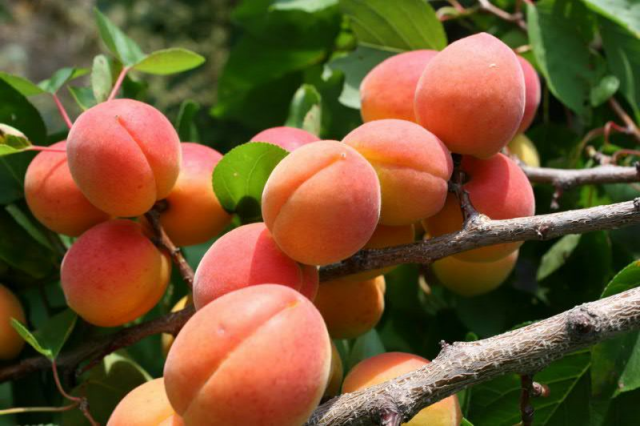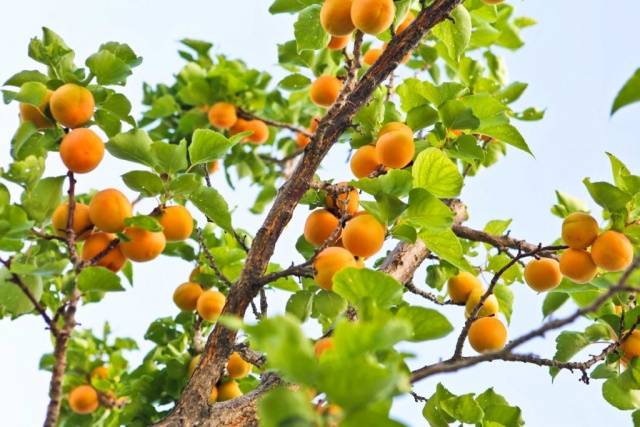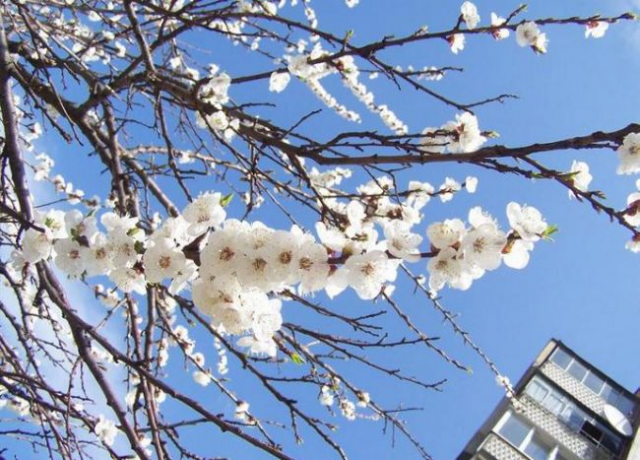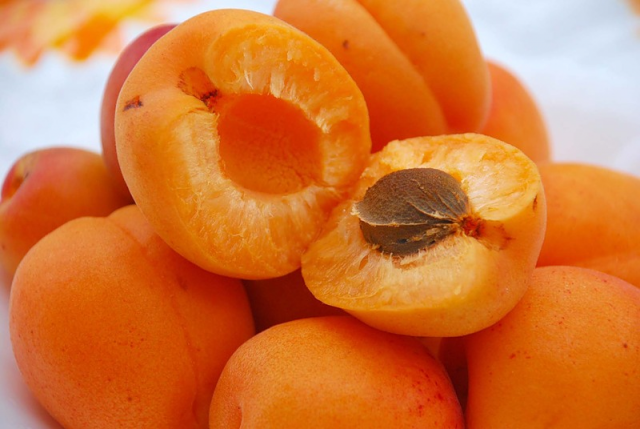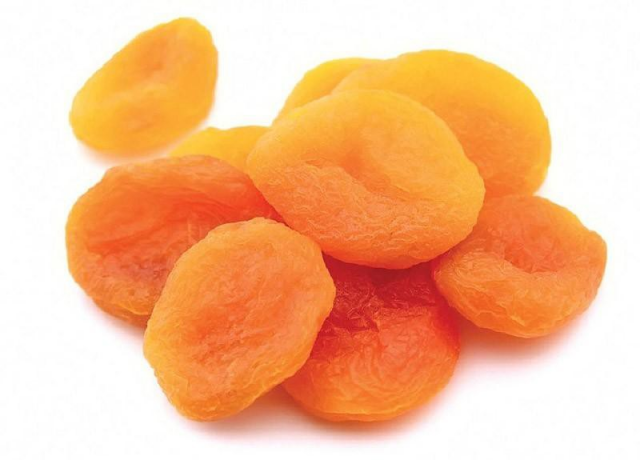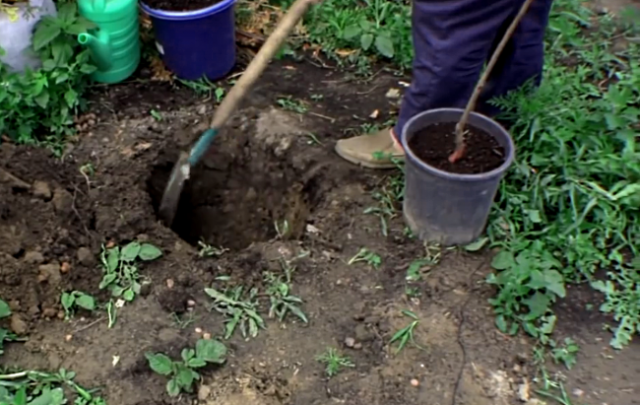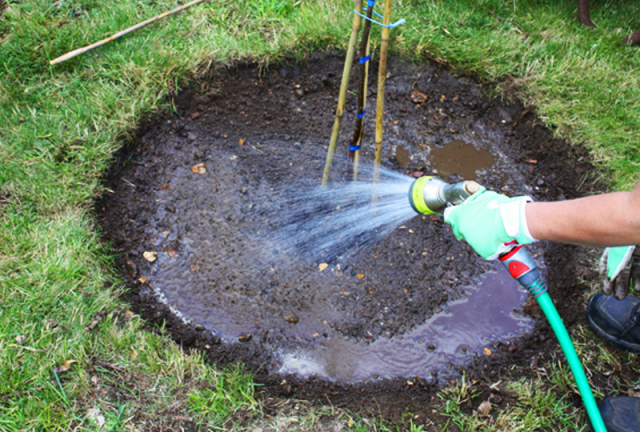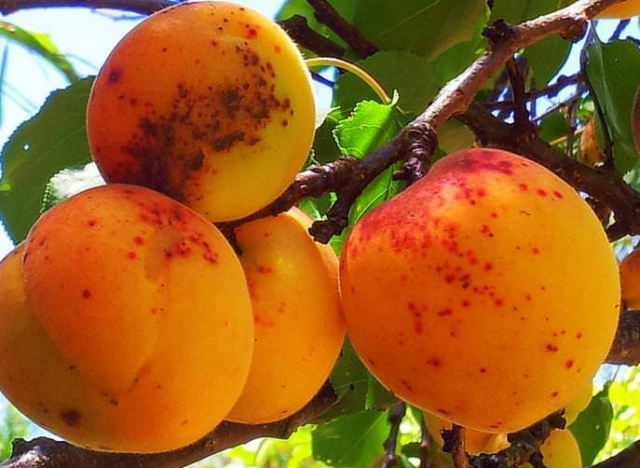Content
Apricot Aquarius is a variety that is deservedly popular in central Russia due to its good characteristics and excellent fruit taste. Compliance with the planting rules and proper care of the plant will help the gardener to regularly collect high yields without much hassle.
Breeding history
Apricot variety Aquarius was bred and first described in the Main Botanical Garden of Russia in 1996. The authorship of the variety belongs to L.A. Kramarenko, who received Aquarius from the seeds of Lel apricot by free pollination.
The record of Aquarius in the State Register as an independent variety was made in 2004.
Description of culture
Description and photo of apricot Aquarius give an idea of it as a powerful, tall (5–6 m) tree with a dense, raised, moderately spreading crown. Annual shoots are smooth and straight, weakly branching.
The leaves of Aquarius are dark green, large, with a jagged edge and a slightly rough surface. Their tips are pointed.
Apricot flowers Aquarius are relatively small (2.5–2.8 cm), white, and sit tightly on the shoots. Consist of 5 petals.
The fruits are round, large, the longitudinal seam is clearly visible from the side. The skin is yellow-orange in color with a barely noticeable blush, slightly pubescent. The size of the bone is small (its weight is 8.5% of the weight of the fruit), it can be easily separated from the pulp. The pulp is tender, orange, of moderate density, very juicy. The pleasant sweet and sour taste of Apricot Aquarius was highly appreciated by the tasters - according to various sources, he received from 4.5 to maximum 5 points.
This variety is officially zoned for the Central region, but it is cultivated almost everywhere in the middle zone of the country. In particular, the cultivation of Apricot Aquarius in the Moscow region has proven itself well.
Characteristics
In order to grow Apricot Aquarius on a personal plot, one should take into account the characteristic features inherent in this variety.
Drought resistance, winter hardiness
Winter hardiness of apricot Aquarius is high, like most representatives of the northern varietal group of this culture. It is able to withstand frosts down to -35 degrees.
Good drought resistance was transferred from the parent variety Lel to Aquarius.
Pollination, flowering period and ripening times
Flowers on the branches of Apricot Aquarius, exuding a delicate honey aroma, appear in abundance before the vegetative buds bloom.
Fruit ripening occurs in medium terms and begins around mid-August.
For gardeners who want to know whether the self-fertile apricot is Aquarius or not, you can confidently answer in the affirmative. Pollinators are optional for him - it is quite possible to get by with just one tree, if, for example, the garden is not large enough.
Productivity, fruiting
Aquarius is one of the high-yielding varieties of apricots, since on average it is capable of producing 133 kg / ha per season. If the plant is young, 10–15 kg of fruit can be harvested from it, while the yield of an adult tree reaches 25–30 kg.
Aquarius bears fruit regularly, every year, starting from 3-4 years of age.
According to reviews about the Apricot Aquarius in the Moscow region, with proper care, it is able to maintain productivity up to 18–20 years.
The fruits of this apricot variety contain:
- 14.2% dry matter;
- 7.6% sugar;
- 2.7% acids.
Scope of the fruit
The transportation of Apricot fruits Aquarius is difficult due to the fact that they are poorly stored. Nevertheless, due to their excellent taste, their purpose is universal.
Aquarius fruits are delicious freshly harvested and can also be frozen and dried. Jam, compotes and desserts made from them are excellent.
Disease and pest resistance
Resistance to the most common diseases and pests of stone fruit trees in Apricot Aquarius was found to be satisfactory.
This variety is moderately resistant to perforated spotting (clasterosporium blight).
As for pests, it is known that the Aquarius apricot hardly infects aphids.
Advantages and disadvantages
A brief description of the Apricot variety Aquarius can be presented as follows:
| Dignity | disadvantages |
| Winter hardiness | Tall tree |
| Stable, high yields | Poor transportability of fruits |
| Great fruit taste | |
| Self-fertility | |
| Clasterosporium and aphid resistance |
Landing features
Planting an Apricot Aquarius has some features that a gardener should know.
Recommended timing
It is advised to plant young apricot trees in the ground:
- in early spring, when the snow melts;
- in the fall (in September or October).
Choosing the right place
The key to success in growing Apricot Aquarius will be the right planting site:
- a well-lit area of the garden, protected from cold winds;
- light in composition and well-drained soil;
- soil reaction - neutral or slightly alkaline;
- groundwater should not be too close to the surface.
What crops can and cannot be planted next to an apricot
It is generally accepted that apricot, including Aquarius, is an “individualist”. It is advised to plant it in such a way that there is a distance of at least 10 m between it and the plantings of other fruit crops or shrubs.
However, there are exceptions with which the Aquarius apricot is able to get along peacefully. Among them:
- some stone fruit crops (cherry plum, blackthorn, dogwood);
- umbrella vegetables and herbs (carrots, dill);
- thyme, lavender;
- other varieties of apricot trees that can be useful as pollinators.
Selection and preparation of planting material
For planting on a personal plot, it is advised to purchase annual apricot seedlings Aquarius at autumn fairs or in nurseries.
Signs of a quality apricot seedling:
- healthy trunk;
- even branches not damaged by pests;
- powerful, developed root system with straight, whitish root tips.
Landing algorithm
Planting apricot Aquarius on the site is done as follows:
- a planting hole (about 0.7 by 0.8 m in size) is usually dug in the fall;
- drainage is laid on the bottom of the pit, a mixture of soil, peat and sand is poured over it, and left until spring;
- in the spring, a part of the soil is selected from the pit, water is poured into the resulting depression and a seedling is carefully placed in the center;
- having straightened the roots of the plant, the planting site is filled with a soil mixture;
- compact the soil in the near-trunk circle, water it and mulch.
The secrets of proper planting and caring for an apricot on a personal plot will be revealed by the video:
Follow-up care of the culture
Apricot pruning Aquarius is carried out annually either in March or at the end of October - November.
You need to trim:
- sick and old branches;
- shoots thickening the crown;
- too long shoots (shorten).
Places of cuts should be covered with garden varnish or oil paint with a natural base.
After planting, the Apricot Aquarius is regularly watered until the beginning of August, making sure that the near-stem circle does not dry out. Watering is then stopped to allow the plant to prepare for winter.
In the future, it is advised to water the tree in the spring and in the first half of summer, making sure that the amount of water is not excessive.
Caring for the Aquarius apricot tree also includes fertilizing.
The general rules for applying dressings are as follows:
- in the fall - organic (mullein, compost);
- in the summer - phosphoric;
- in early spring - mineral (nitrogen-containing).
Preparing the Apricot Aquarius for the winter period, at the end of October - November it follows:
- collect the foliage that has fallen after the fall of leaves, and destroy it (burn or bury);
- whitewash the trunk, skeletal branches and, if possible, the bark of the shoots of the tree with garden whitewashing to protect from frost and prevent sunburn in early spring;
- protecting the trunk from rodents (hares), you can wrap it with coniferous spruce branches (needles down) or artificial material that allows air to pass through well.
Diseases and pests, methods of control and prevention
When caring for an Aquarius apricot, you should be able to distinguish between the most common diseases and know how to deal with them:
| Disease | Manifestations | Prevention and treatment measures |
| Scab | Spots of brown or greenish bloom on the leaves, drying of the foliage, damage to flowers and fruits | Timely pruning and weed control. Bordeaux liquid treatment |
| Moniliosis | Drying of flowers and the upper part of the shoots, resembling "burns", rotting of fruits on the branches | Prevention - competent tree care. Treatment - spraying with an aqueous solution of copper oxychloride, "Strobi", "Topsina-M", "Topaz" with the addition of soap |
| Clasterosporium disease | Brown spots on the leaves, in the places of which holes are further formed |
Knowing pest control measures will also help the farmer:
| Pest | Appearance and activity | Prevention and control measures |
| Moth | A small brown butterfly, whose caterpillars, penetrating the fruits, feed on their pulp | Spraying "Metaphos", "Sonnet", "Bankol" |
| Weevil | A small beetle with a shiny green-purple back. The affected ovary of the fetus turns black and fades. Damaged ("gnawed") leaves and fruits | Spraying with "Metaphos", "Decis", "Intravir" |
Conclusion
Apricot Aquarius is a winter-hardy, self-fertile, high-yielding multi-purpose variety with excellent taste. Its disadvantages include the high growth of the tree and the poor preservation of fresh fruits. However, positive qualities, undoubtedly, prevail - accordingly, reviews of the Aquarius apricot among gardeners of central Russia are mostly good.
